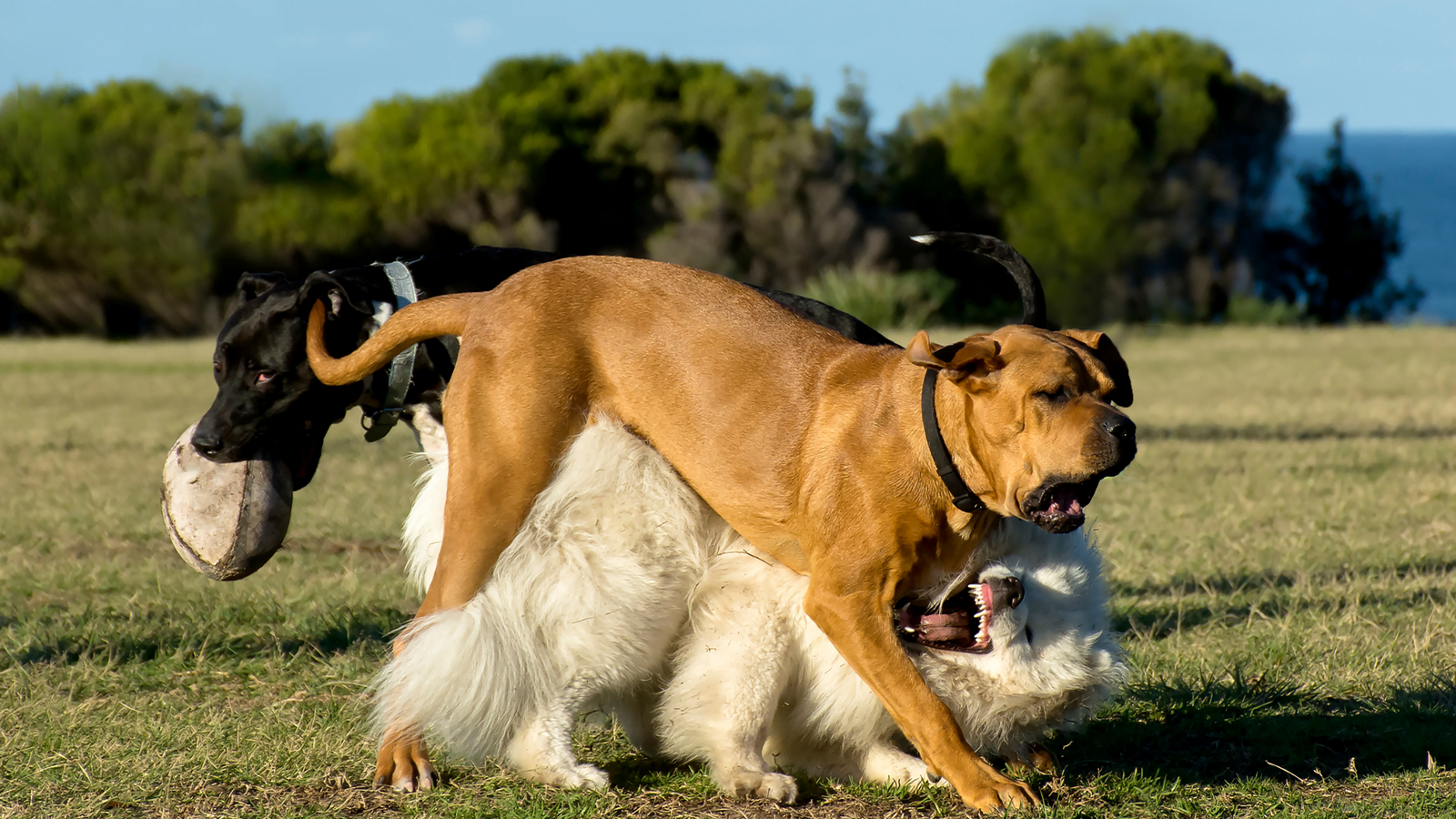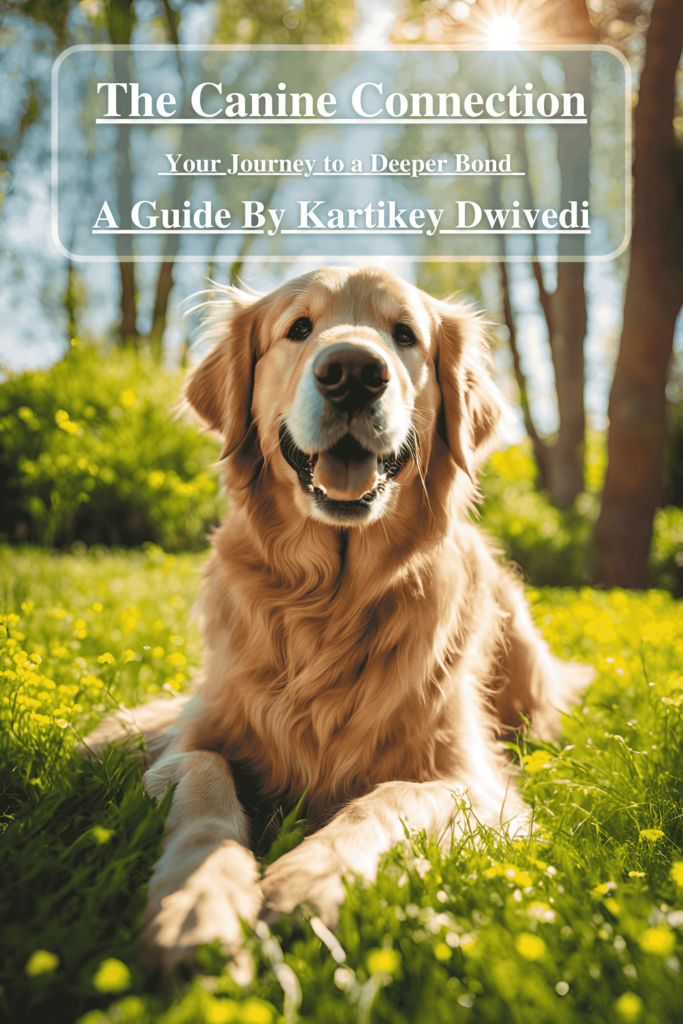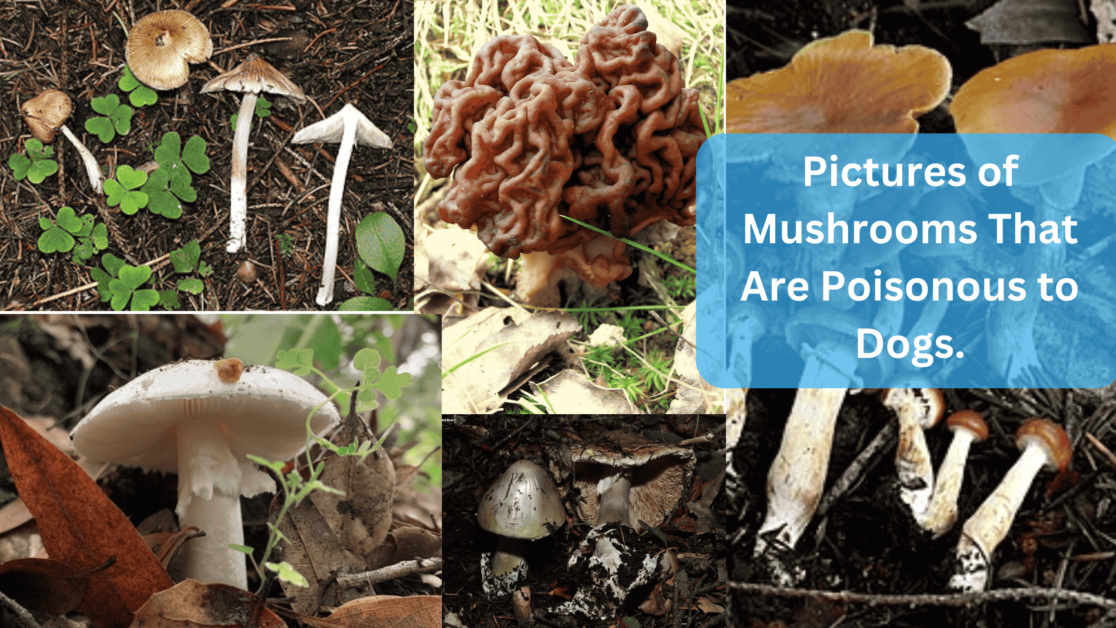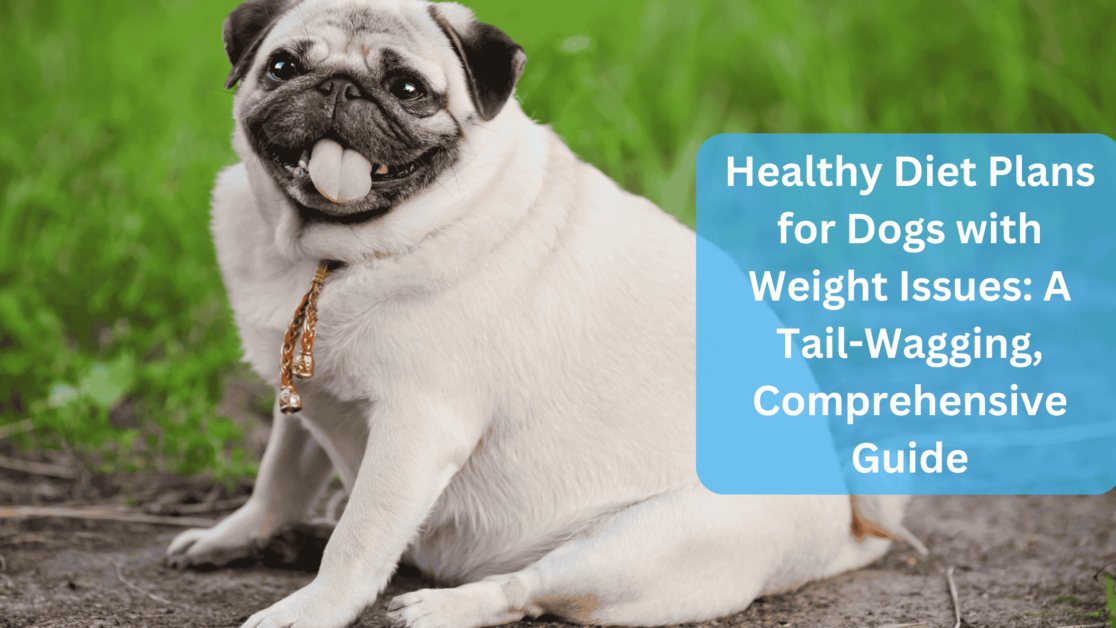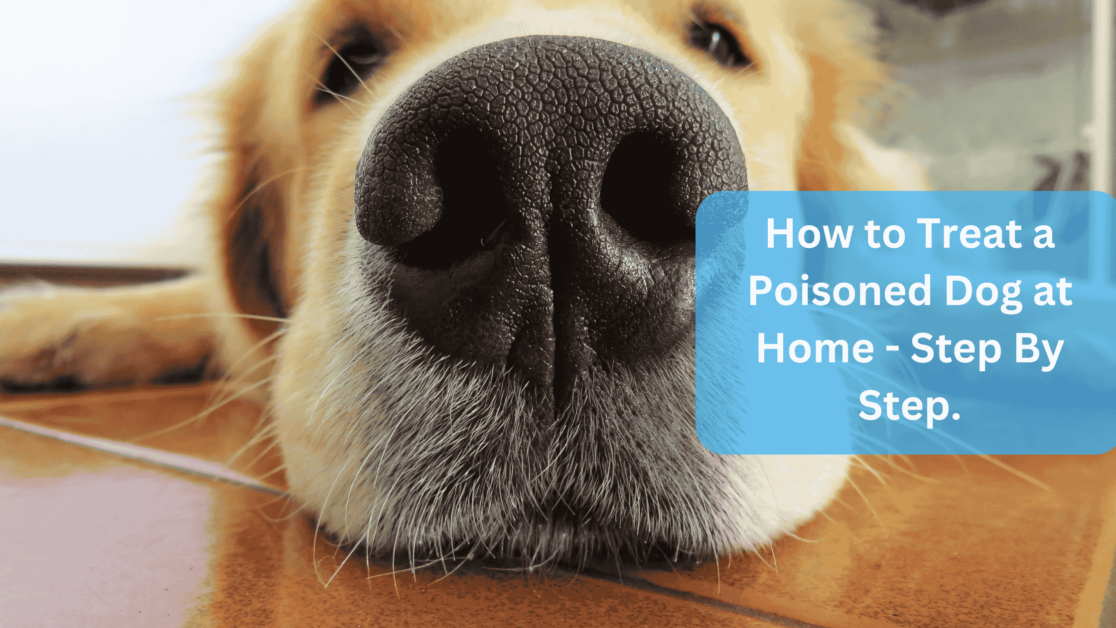Dogs are social animals, but sometimes they can fight each other. Dog fights can be dangerous for the dogs involved and any people or animals in the vicinity. While a certain amount of rough play between dogs is normal, it’s important to know how to tell if a dog fight is serious and what steps to take to keep everyone safe. This comprehensive article will discuss how to tell if a dog fight is serious and what to do about it.
Understanding Dog Behavior During Fights
Dog fights can be alarming and dangerous for both dogs and their owners. To help prevent dog fights and intervene effectively if they do occur, it’s important to understand dog behavior during fights.
- Dog Body Language: Dogs communicate their feelings through body language, including during a fight. Signs of aggression or discomfort may include raised hackles, stiff posture, and intense eye contact. In contrast, a dog feeling submissive or fearful may crouch down, avoid eye contact, and tuck their tail between their legs.
- Triggering Factors: Dogs may be triggered to fight due to various factors, such as resource guarding, territorial behavior, fear, or frustration. Identifying and addressing these triggers can help prevent fights from occurring.
- Pack Mentality: Dogs are packed animals and may act differently in a group. In some cases, dogs may band together to attack another dog. It’s important to keep an eye on the dynamics of a group of dogs to prevent fights from escalating.
- The severity of the Fight: Not all dog fights are the same. Some fights may be minor scuffles that resolve quickly, while others may be serious and result in injuries. The severity of a fight can depend on factors such as the dogs’ size, breed, and temperament.
By understanding these factors, you can learn to recognize the signs of a potential fight and take steps to prevent it from escalating. It’s important to intervene in a calm and controlled manner to avoid further agitating the dogs. In some cases, seeking professional help from a veterinarian or animal behaviorist may be necessary to address underlying behavioral issues.
Signs of a Serious Dog Fight : How to Tell if a Dog Fight is Serious
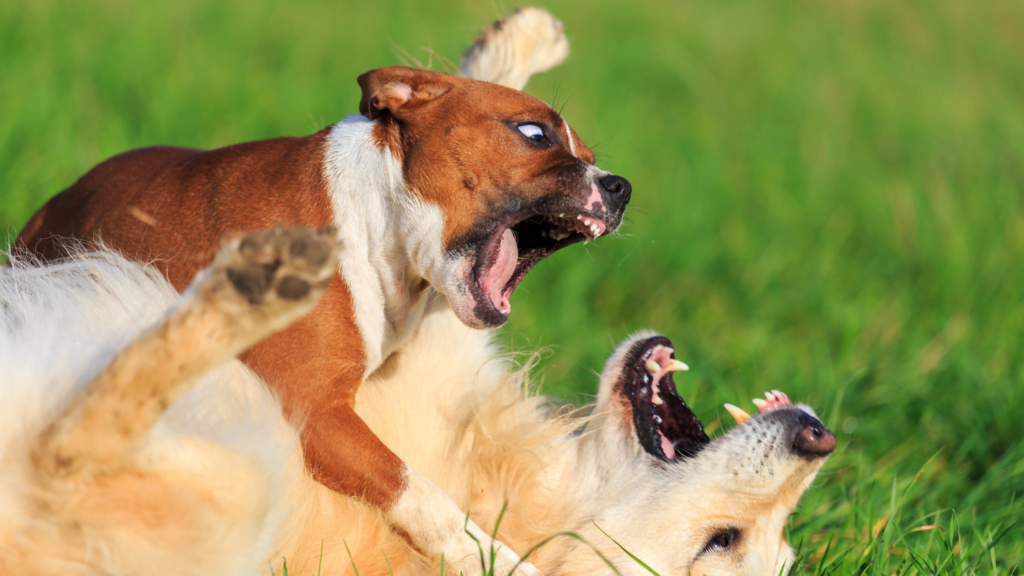
Dog fights can be dangerous, and it’s important to recognize the signs of a serious fight to take appropriate action to protect the dogs and any people nearby. Here are some signs of a serious dog fight:
Aggressive behavior
The dogs exhibit intense, aggressive behavior such as biting, lunging, and growling.
Locked jaws
The dogs are locked in a bite hold and cannot separate themselves from one another.
Injuries
The dogs have inflicted serious injuries on each other such as puncture wounds, lacerations, or broken bones.
Blood
A significant amount of blood is present, indicating that the fight is more severe.
Growling and Biting
The dogs are growling, biting, and holding onto each other with intense force and show no signs of releasing or calming down.
High-pitched screams or cries
One or both dogs are screaming or crying out in a high-pitched tone, indicating significant pain or fear.
Loss of consciousness
One or both dogs have lost consciousness, which indicates that the fight is severe and immediate medical attention is needed.
It’s important to intervene in a serious dog fight as soon as possible. Never try to physically separate the dogs, as this can result in serious injuries to yourself or the dogs. Instead, try to distract them by making loud noises or spraying water. It’s best to seek professional help from a veterinarian or animal behaviorist to help diffuse the situation and address any underlying behavioral issues that may have led to the fight.
Also Read : The Ultimate Guide to Skull Dog Fursuits: A Comprehensive Guide for Pet Owners
Factors That Determine the Severity of a Dog Fight
The severity of a dog fight can vary depending on several factors, including:
- Breed and size of the dogs: The size and breed of the dogs involved in the fight can significantly impact the severity of the fight. Larger breeds and dogs with a history of aggression may cause more damage than smaller breeds or more docile dogs.
- Age of the dogs: Puppies and older dogs may be less aggressive and more likely to try to avoid conflict. Conversely, adult dogs may be more aggressive and prone to fighting.
- Triggering factors: The triggering factors that led to the fight can also determine the severity of the fight. If the dogs were fighting over food or toys, the fight might not be as serious as a fight due to territorial aggression or fear.
- Previous history of aggression: If the dogs involved have a history of aggression or have been involved in previous fights, the fight may be more severe as the dogs may be more prone to violence.
- Socialization and training: Dogs that have been socialized and trained to interact with other dogs and people are less likely to engage in aggressive behavior. Dogs that have not been properly socialized or trained may be more prone to aggressive behavior and serious fights.
- Environment: The environment in which the fight occurs can also impact the severity of the fight. The dogs may be more prone to intense, serious fights if they are in a small, enclosed space. Dogs fighting in a more open, spacious area may be less likely to seriously injure one another.
Understanding these factors can help you take steps to prevent dog fights from occurring and intervene effectively if a fight does occur. It’s important to keep a close eye on your dogs and to seek professional help if you are concerned about their behavior.
What to Do When Dogs are Fighting: Do’s and Don’ts

When dogs are fighting, it can be stressful and dangerous for both the dogs and any nearby people. Here are some dos and don’ts to keep in mind if you find yourself in this situation:
DO’s:
- Stay calm: Dogs can sense fear and anxiety, so it’s important to remain calm and composed to avoid further agitating them.
- Make a loud noise: A loud noise such as clapping, yelling, or banging on a nearby object can sometimes startle the dogs and break their focus on the fight.
- Use a distraction: A distraction such as throwing a blanket over the dogs or spraying water at them can help break up the fight.
- Seek professional help: If you are unable to intervene or the situation seems dangerous, it’s important to seek professional help from a veterinarian, animal control officer, or experienced dog trainer.
- Separate the dogs once it is safe to do so: Once the fight has ended, it is important to separate the dogs to prevent any further aggression.
DON’T:
- Physically intervene: Attempting to physically separate the dogs can be extremely dangerous and can result in serious injuries to yourself or the dogs.
- Punish the dogs: Punishing them after a fight can increase their aggression and worsen the situation.
- Blame or scold one dog: It’s important to avoid blaming or scolding one dog, as both dogs may have contributed to the fight.
- Leave the dogs unsupervised: After a fight, it’s important to separate them and keep them in separate areas to prevent further aggression.
Remember, prevention is key when it comes to dog fights. Keeping a close eye on your dogs and addressing any behavioural issues can help prevent fights from occurring in the first place.
How to Prevent Dog Fights from Happening
Preventing dog fights is important in keeping your dogs and other animals or people safe. Here are some steps you can take to help prevent dog fights from happening:
Proper socialization: Socializing your dogs from a young age can help them feel comfortable around other dogs and people, reducing the likelihood of aggression and fights.
Supervision: Keeping a close eye on your dogs, especially around other dogs, can help you identify any potential signs of aggression and intervene before a fight occurs.
Training: Basic obedience training can help your dogs respond to your commands and stay calm in new or stressful situations.
Avoiding trigger situations: Identifying situations that may trigger aggressive behavior in your dogs, such as food or toy guarding, and avoiding those situations can help prevent fights.
Spaying/neutering: Spaying or neutering your dogs can reduce aggression and territorial behavior, making them less likely to fight.
Separate feeding areas: Providing separate feeding areas for your dogs can help reduce the likelihood of fights over food.
Avoiding unfamiliar dogs: Avoiding interactions with unfamiliar dogs or dogs with aggressive behavior can reduce the risk of your dogs getting into fights.
Regular exercise and playtime: Regular exercise and playtime can help reduce your dogs’ stress and energy levels, making them less prone to aggression and fights.
Remember, it’s important to always be aware of your dogs’ behavior and take action to prevent fights from occurring. Seek professional help from a veterinarian or animal behaviorist if you have any concerns about your dogs’ behavior.
Importance of Training and Socializing Dogs

Training and socializing your dog are important steps in helping your pet become a well-behaved and well-adjusted member of your family. Here are some reasons why training and socializing are so important:
- Promotes Good Behavior: Proper training and socialization can help prevent problem behaviors such as aggression, excessive barking, and destructive chewing. It can also help teach your dog to follow basic commands, such as “sit,” “stay,” and “come,” which can be crucial in keeping them safe in potentially dangerous situations.
- Strengthens Bond with Your Dog: Training and socializing can help you build a stronger bond with your dog. Teaching your dog to listen and respond to you can establish a sense of trust and respect between you and your pet.
- Encourages Positive Interactions with People and Other Dogs: Socializing your dog from a young age can help them become comfortable and well-behaved around people and other dogs. This can make it easier to take them out in public and introduce them to new people and animals.
- Reduces Risk of Dog Bites and Aggression: Proper training and socialization can help reduce the risk of your dog becoming aggressive or biting people or other animals. Dogs not properly socialized and trained may become fearful or territorial, leading to dangerous situations.
- Helps Your Dog Stay Safe: A well-trained and socialized dog is likelier to listen to your commands and avoid dangerous situations. For example, a dog trained to come when called is less likely to run into traffic or become lost.
In summary, training and socializing your dog are essential for promoting good behavior, strengthening the bond between you and your pet, and reducing the risk of dangerous situations. It is important to start training and socializing your dog from a young age and to seek professional help if you have any concerns about your pet’s behavior.
Also Read : Blue Heeler Corgi Mix: A Comprehensive Guide.
Seeking Professional Help for Aggressive Dogs
If your dog displays aggression, seeking professional help from a veterinarian or animal behaviorist is important. Here are some reasons why seeking professional help for aggressive dogs is important:
- Safety: Aggressive dogs can risk the safety of people and other animals. Hence, addressing any aggressive behavior as soon as possible is important to prevent injuries and harm.
- Understanding the Root of the Behavior: A professional can help identify the underlying cause of your dog’s aggression, which can be due to fear, anxiety, or territorial behavior, among other reasons. Understanding the root cause can help you manage the behavior and prevent future incidents.
- Developing a Treatment Plan: A professional can help develop a treatment plan tailored to your dog’s specific needs, including behavior modification techniques, medication, and training.
- Reducing Stress and Anxiety: Aggressive behavior in dogs can result from stress and anxiety. A professional can help identify ways to reduce stress in your dog’s environment, which can help improve their behavior.
- Improving Quality of Life: Addressing aggressive behavior can improve your dog’s quality of life by reducing fear, anxiety, and stress and promoting positive behaviors.
Aggressive behavior can be managed and improved with proper treatment. Still, it requires patience, commitment, and a willingness to work with your dog. Remember, aggressive behavior in dogs should not be ignored, and it’s important to seek professional help as soon as possible.
Legal Consequences of Dog Fighting
Dog fighting is illegal in most countries and can have severe legal consequences for those involved. Here are some examples of the legal consequences of dog fighting:
- Criminal Charges: Participating in dog fighting can result in criminal charges, including animal cruelty, animal fighting, and organized crime. Depending on the jurisdiction and the severity of the offence, penalties may include fines, imprisonment, and probation.
- Property Seizure: In many cases, law enforcement can seize property, including dogs, vehicles, and equipment, that are used in dog fighting operations. This can result in significant financial losses for those involved.
- Professional Consequences: Individuals involved in dog fighting may face professional consequences, including loss of employment, license revocation, and damage to their professional reputation.
- Social Consequences: Being involved in dog fighting can also lead to social consequences, including public outcry and ostracization from the community.
- Impact on Animals: In addition to the legal consequences for those involved, dog fighting can seriously harm the animals involved. In many cases, dogs used for fighting are subjected to brutal training and conditioning methods and may be killed or seriously injured during fights.
In summary, dog fighting is a serious crime with severe legal consequences. It harms animals and negatively affects those involved, including criminal charges, property seizures, and professional and social consequences. It’s important to report any suspected cases of dog fighting to the appropriate authorities, such as law enforcement or animal welfare organizations, to help prevent these illegal activities and protect animals from harm.
